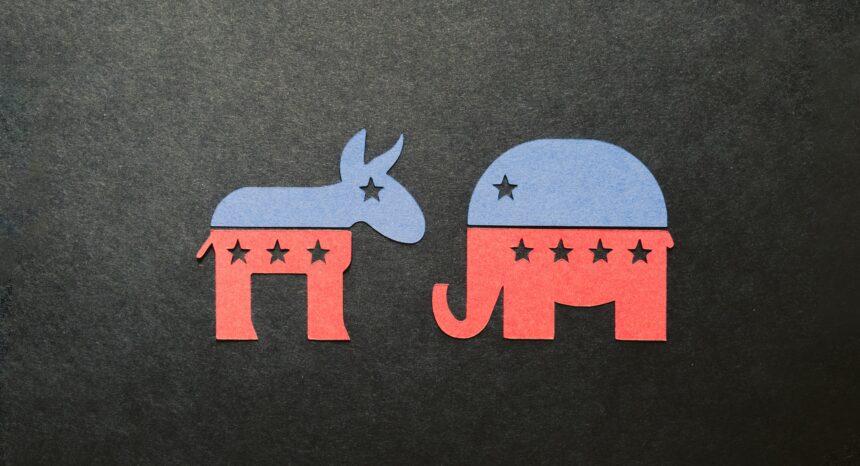Donald Trump would have “won” the 2022 U.S. presidential election if the vote counting had stopped on election night, just as Al Gore was the “winner” at one point on election night 2000.
The 2022 midterm election returns could also be marred by a rush to judgment by political leaders or news outlets. Millions of mail-in ballots will have been cast, and some states do not permit the counting of them before Election Day.
If analysts’ projections are correct, there’s not likely to be much suspense regarding control of the House of Representatives. The party out of power has gained House seats in 22 of the 25 midterms of the past century and has never failed to gain seats when the economy is struggling, and the incumbent president’s approval rating is below 50%. Add in the Democrats’ slim majority in the House and Republicans’ redistricting advantage, and it would be a political miracle if Democrats were to retain control of the House.
The Senate is a different story. There are 35 Senate seats being contested, 14 of which are currently held by Democrats. To retain their hold on the Senate, Democrats need to win at least 14 of the contested seats. According to the most recent ratings of the Cook Political Report, nine of the currently held Democratic seats are judged “safe” or “likely” while 17 are judged “safe” or “likely” Republican. If those projections hold, control of the Senate will come down to the 9 races that are judged to be toss-ups or leaning. If either party wins 5 of these contests, it will control the Senate.
Here are the nine presumably close Senate races and the likelihood that the outcome will be known on election night based strictly on how mail-in and absentee ballots are handled in the 9 states, mindful of the possibility that even if the count can begin before Election Day, it might not be completed by then or include ballots postmarked in time but not received.
- Counting can begin before Election Day: Arizona, Colorado, Georgia, Nevada.
- Counting can begin Election Day before polls close: North Carolina, Pennsylvania, Wisconsin.
- Counting can begin only after polls close: New Hampshire.
The other factor that could lead to an uncertain Senate outcome on election night is Georgia’s requirement that a runoff election be held if no candidate gets more than 50% of the vote. If Democrats and Republicans split the other 8 races, Georgia’s seat would be decisive and a run-off election there is a distinct possibility. Polls show a virtual dead heat in the race between Sen. Raphael Warnock (D-Ga.) and Republican challenger Herschel Walker, with the Libertarian Party’s nominee, Chase Oliver, drawing enough support to deny either candidate an early November victory.
When presenting popular vote results, context will matter more than ever — the percentage of the statewide vote reflected in the count, the rough percentage of outstanding ballots that are mail-in ballots and when they will be tabulated, the locations within the state that have reported returns, the tendency of these locations to vote Republican or Democratic, and so on. Attention to these factors would signal that there are many more votes yet to come and could dissuade viewers from hasty conclusions or from believing a party’s premature claim to have won control of the Senate.
The 2022 midterms have not been a proud moment in our election history. Perhaps a bit of pride will be felt if turnout projections hold. Midterm turnout could reach 50%, which would be one of the highest levels in the past century. Nevertheless, it’s hard to be too boastful about an election in which half of the eligible voters stay home.
It’s hard to hold up the 2022 midterms as an example of democracy at its best. The midterms have been marred by the continuing false claim that the 2020 presidential election was stolen, by new state laws that restrict ballot access, by deceptive political advertising, and by an unprecedented amount of campaign spending, much of it by independent expenditure groups.
Nor can it be said that the 2022 midterms have been one of the news media’s finest moments. News outlets have again served as a megaphone for unfounded charges and have provided little in the way of context that would help voters distinguish assertion from reality. For instance, there have been dozens of poll-driven stories on how the crime issue is hurting Democratic candidates, leading some voters to equate Democrats with crime. Rare has been the story explaining the factors contributing to crime and how, if at all, the problem can be traced to the policies of one or the other party.
If 2022 is what we’ve come to expect from candidates and media in this age of heightened party polarization and audience competition, a rush to judgment on election night would compound the ugliness of this election. Careful attention to the nature of the vote count in key races is essential. If journalists get it wrong, Americans’ eroding trust in elections will continue to decline.
Thomas E. Patterson, Bradlee Professor of Government & the Press at Harvard’s Kennedy School, is the founder of The Journalist’s Resource and author of several books, most recently “Is the Republican Party Destroying Itself?” JR has posted a new installment of his Election Beat 2022 series every week leading up to the midterm elections. Patterson can be contacted at thomas_patterson@harvard.edu.
Further Reading:
Cook Political Report, “2022 Senate Race Ratings,” October 27, 2022.
Michael P. McDonald and Matthew P. Thornburg, “Interview Mode Effects: The Case of Exit Polls and Early Voting,” Public Opinion Quarterly 76, 2012.
Stephen Pettigrew and Charles Stewart III, “Protecting the Perilous Path of Election Returns: From the Precinct to the News,” SSRN, Feb. 7, 2020.
Joseph E. Uscinski, “Too Close to Call? Uncertainty and Bias in Election-Night Reporting,” Social Science Quarterly 88, 2007.


Expert Commentary